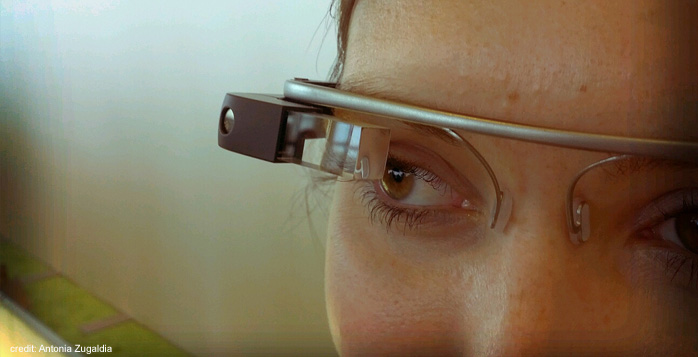The concept of wearable computing is no longer confined to science fiction. Google’s head-mounted Glass project is now in the hands of developers, Nike’s FuelBand is frequently seen on the wrists of fitness enthusiasts and everyday people alike, and rumours of a wrist-mounted flexible glass screen from Apple persist and could arrive before the end of the year.
While not physically attached to our bodies, smartphones are rarely found far from our hands as they have come to serve other needs beyond basic communication through voice, text and email.
As most of you reading this post can probably attest, your smartphone is now part of your life. It serves as an alarm to wake you up in the morning, a camera to capture images, a gaming device, a wayfinding device, a connection to social media and the web, and it could soon replace your wallet.
A recent survey of our AskingCanadians online research community found that 32 per cent of respondents agreed with the statement, “When I accidentally leave my mobile phone somewhere, I feel lost.”
The use of mobile devices such as smartphones and tablets have transformed our experiences as customers, providing us with Internet connectivity throughout the purchase journey. We use mobile to quickly research products (even at home), check inventory or store location, take images of the physical product for later review, search for deals around us and online, make payments in person or pay online, and share kudos or complaints about products or services to our social networks.
Smartphones, or other mobile thingamabobs (technical term) will keep us connected to the Internet, but will likely remain out of view, with the interfaces that we physically interact with eventually shifting to our wearable devices.
These days, the usage of mobile devices in retail spaces can easily be observed as the smartphone requires at least one hand to be occupied holding the device, either down for reading, playing and input, or in an up or arm’s length position for capturing images or displaying a layer of augmented reality.
Wearable devices while still visible (at this point) have the potential to be used for more clandestine activities within retail or public environments. Despite not being available to the public yet, a bar in Seattle has already banned the use of Google Glass on its premises, with the promise of an ‘ass-kicking’ to violators.
Augmented Reality
Speaking of augmented reality, head-mounted devices such as Google Glass have the potential to open the floodgates to AR experiences that may feel awkward with a smartphone, but provide the head-up display favoured by Terminators and Top Gun jet pilots alike.
Tying the heads-up display to image recognition tools and location information can be used to trigger an overlay of information on the environment around us, providing everything from wayfinding information within a mall or large retail store, to displaying detailed information and reviews of the products in front of us.
Mobile payments
Touch, Swipe, tap to pay systems have mostly relied on chip-embedded cards or on-screen 2d codes (think Starbucks). Wrist-mounted devices will ideally include NFC functionality, allowing for quick scanning of items with the goal of speeding up the more routine process of choosing items and paying, while allowing customers to enjoy the more experiential parts of shopping.
Data Everywhere
One of the challenges that retailers face today is an overload of data. Wearable devices have the potential to provide a whole new avalanche of customer data for the retailer and marketers to sort through. Sensors on wearable devices have the ability to detect changes in our vital signs, which can be used for detecting and communicating signs of stress. Could this information (if shared and detected publicly) be used to apply a mood-reading to customers’ purchases?
Customer Service
It’s not just customers who can take advantage of wearable devices. Staff in forward-thinking retail and service environments are already using tablets and smartphones to help customers learn more about products or help them find an item on the floor or in stock at another location. Wearable devices will free up their hands, allowing them to interact more directly with the customer while still enabling them to access back-end informational systems.
While online shopping continues to grow and heavyweights like Amazon, Walmart and eBay compete on same-day delivery, physical retail experiences will not disappear but will continue to evolve.
What challenges and opportunities can you see unfolding with the introduction of wearable devices into retail environments or other touchpoints in a customer’s purchase journey?
Photo via Ars Electronica. Used under Creative Commons.
